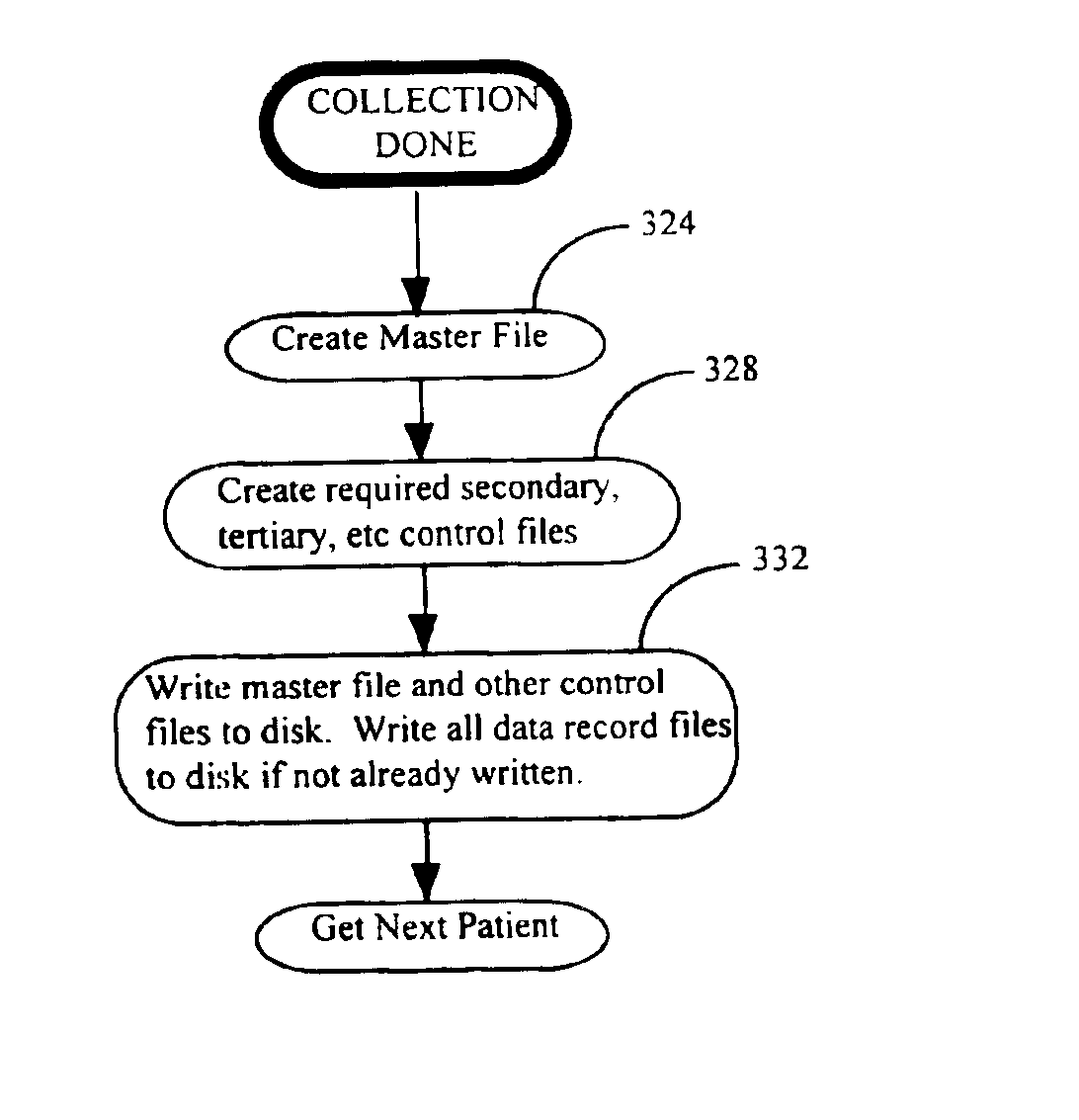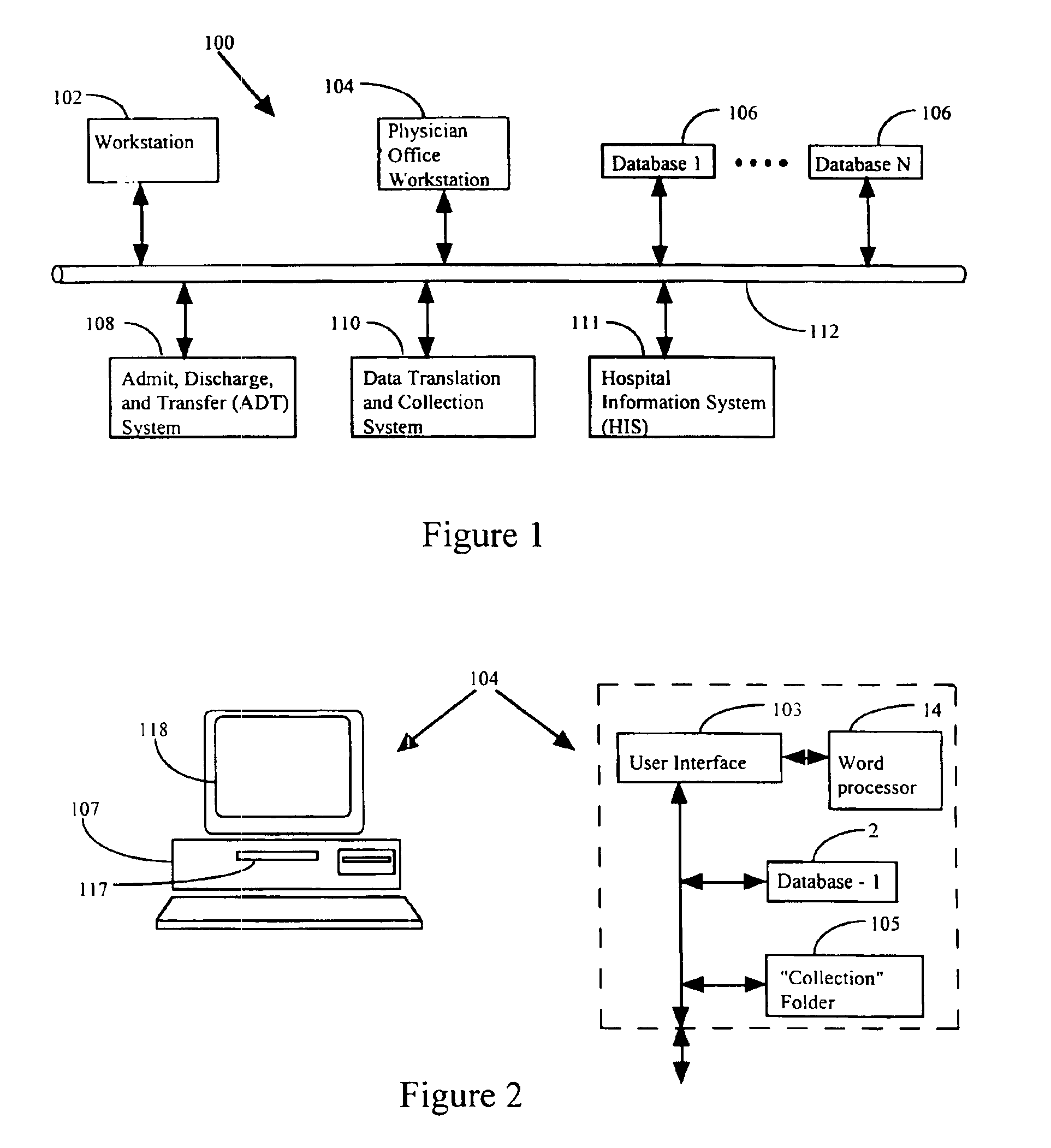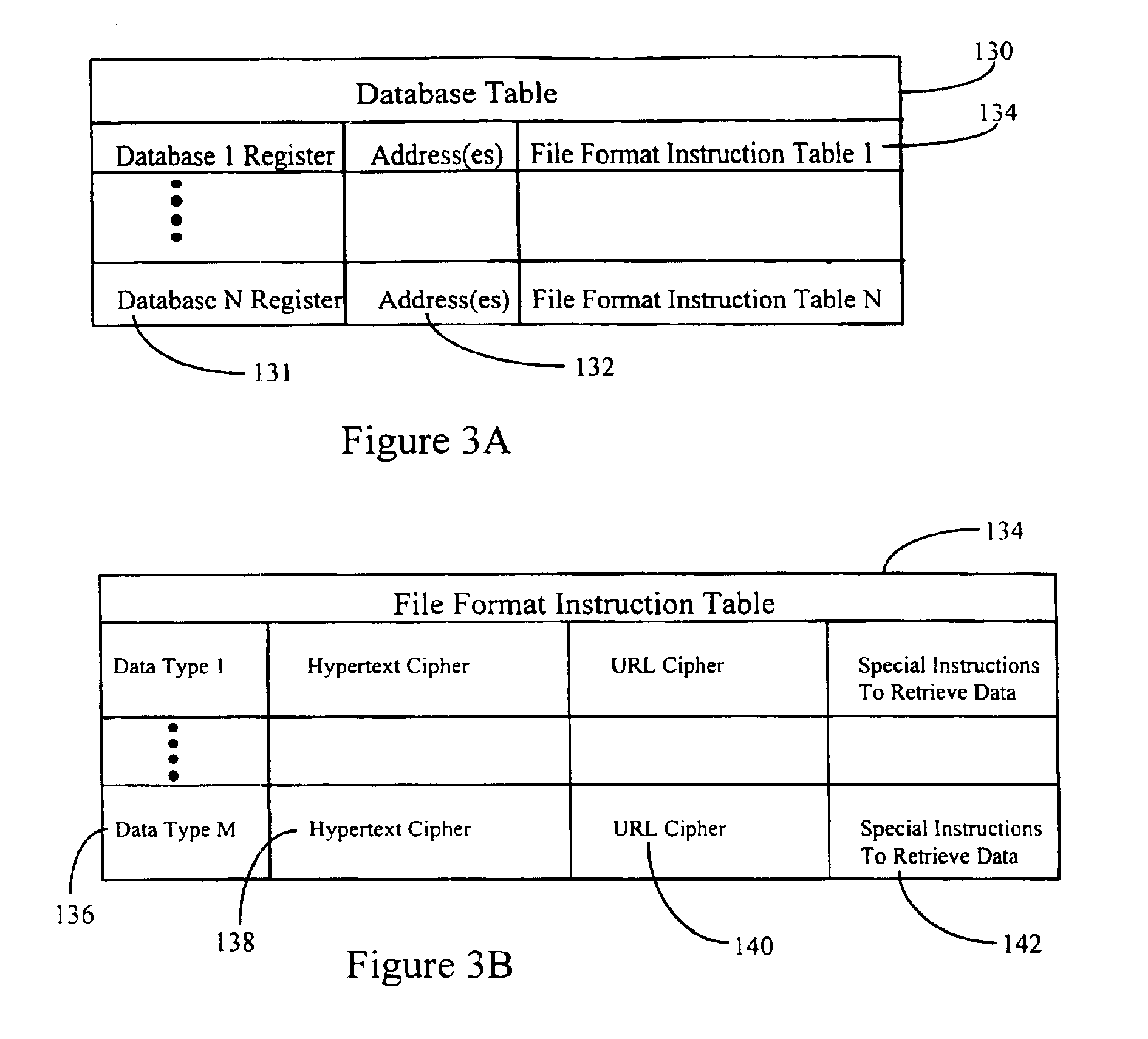Method and system for automated data storage and retrieval
a data storage and data technology, applied in the field of computer systems for collecting, storage and retrieval of data, can solve the problems of automated process of comprehensive retrieval of patient data, inconvenient use of conventional paper charts, and still a substantial amount of data, so as to maximize the accessibility of end-users and facilitate display. , the effect of minimizing costs
- Summary
- Abstract
- Description
- Claims
- Application Information
AI Technical Summary
Benefits of technology
Problems solved by technology
Method used
Image
Examples
Embodiment Construction
[0081]Referring now to FIG. 1, the invention is illustrated as a medical computer network 100, including a plurality of hospital based workstations 102 (which may be personal computers), a plurality of physician office workstations 104 which may also be personal computers, a plurality of databases 106 which may be provided by a multitude of vendors with separate data structures and data elements. The computer network 100 may also comprise an Admit, Discharge, and Transfer (ADT) system 108, a data translation and collection system 110, and a Hospital Information System (HIS) 111. The data translation and collection system 110 is not necessarily a separate physical element of the medical computer network 100, but is represented that way in the preferred embodiment for purposes of illustration only. It may be alternately recognized as a program application or even an aspect of a network operating system, the operations of which may be distributed over and performed by many different pr...
PUM
 Login to View More
Login to View More Abstract
Description
Claims
Application Information
 Login to View More
Login to View More - R&D
- Intellectual Property
- Life Sciences
- Materials
- Tech Scout
- Unparalleled Data Quality
- Higher Quality Content
- 60% Fewer Hallucinations
Browse by: Latest US Patents, China's latest patents, Technical Efficacy Thesaurus, Application Domain, Technology Topic, Popular Technical Reports.
© 2025 PatSnap. All rights reserved.Legal|Privacy policy|Modern Slavery Act Transparency Statement|Sitemap|About US| Contact US: help@patsnap.com



